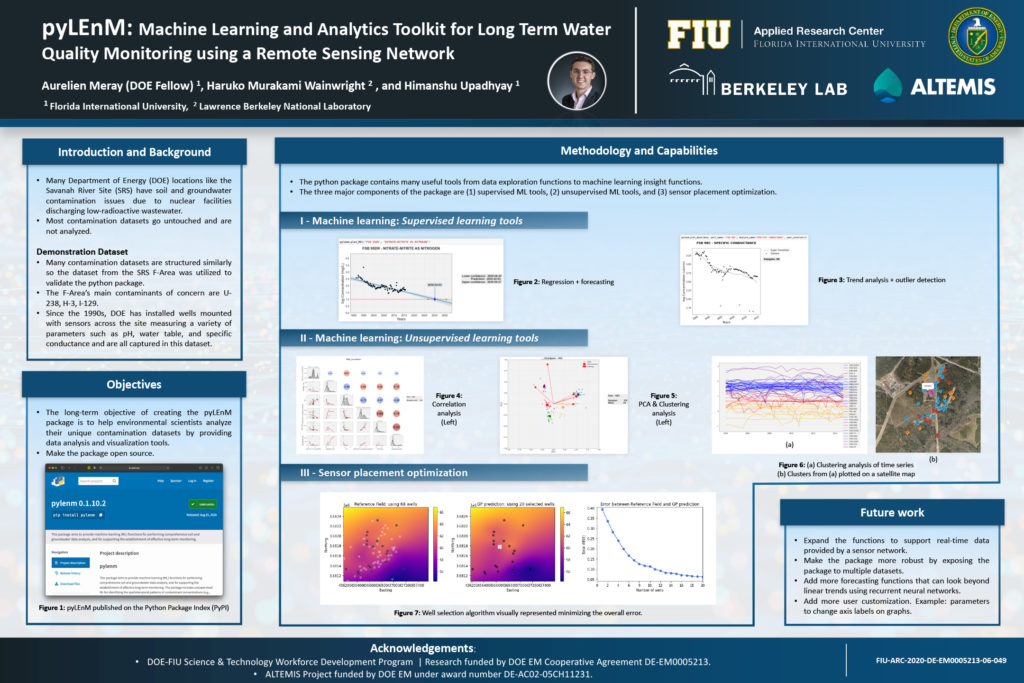ALTEMIS scientists and students participated in the Waste Management Symposia (WMS), held virtually March 8-12, by sharing their research findings at the annual conference established in 1974 to foster global innovation and collaboration in the management of radioactive waste and related contamination.
The ALTEMIS project – funded by the Department of Energy (DOE) Office of Environmental Management – is implementing technologies to improve efficacy and cost-efficiency of contaminant monitoring at the DOE legacy sites, where a complex groundwater plume consisting of a diverse mixture of radionuclides will require monitoring for decades.
The team views these state-of-art technologies – including in situ groundwater sensors, geophysics, drone/satellite-based remote sensing, reactive transport modeling, and AI – as essential to building the new paradigm of long-term monitoring at groundwater contamination sites. Their work there is described in an overarching concept paper, recently published in the journal Environmental Management (Denham et al., 2020), which highlights the importance of long-term monitoring of contaminated groundwater and the use of new technologies such as geophysics, UAV, and AI/ML.
Carol Eddy-Dilek of Savannah River National Laboratory, co-PI of the project with Haruko Wainwright of Berkeley Lab, has estimated the cost of continued sampling and analyses of the current inventory wells in the EM and LM complex will be $3 billion over the next 25 years. “We estimate the new strategy will provide improved monitoring of the residual contamination at less than 25% of the cost.”
ALTEMIS scientists and students presented their research findings in multiple poster and oral presentations at WMS, which has become known as the premier open forum for discussing and seeking safe, environmentally responsible, technically sound and cost-effective solutions to managing radioactive wastes and the decommissioning of nuclear facilities.
Zexuan Xu from LBNL talked about his advanced reactive transport modeling work focused on predicting climate change impacts on residual contaminants like uranium. Himanshu Upadhyay from FIU presented the AI and machine learning framework for soil and groundwater management at DOE legacy sites. In addition, a UC Berkeley graduate student, Dajie Sun, presented his work on the multiscale spatiotemporal data integration method for the Fukushima radiation monitoring data.
Several students affiliated with the ALTEMIS project gave poster presentations. Aurelien Meray, who received the award for best student poster, and Savannah Sturla talked about the python package development for analyzing long-term monitoring of soil and groundwater (e.g., correlation analysis, spatiotemporal interpolation, time-series clustering). Rebecca Serata presented the reactive transport modeling work for predicting the groundwater concentrations at the Savannah River site. Meray received the Best Student Poster Award for his work.

“This is the prime conference for the research and industry activities under the DOE Office of Environmental Management. It was great to show the breadth of our research from AI/machine learning to predictive modeling, and also the next generation development in this area,” Wainwright mentioned.

